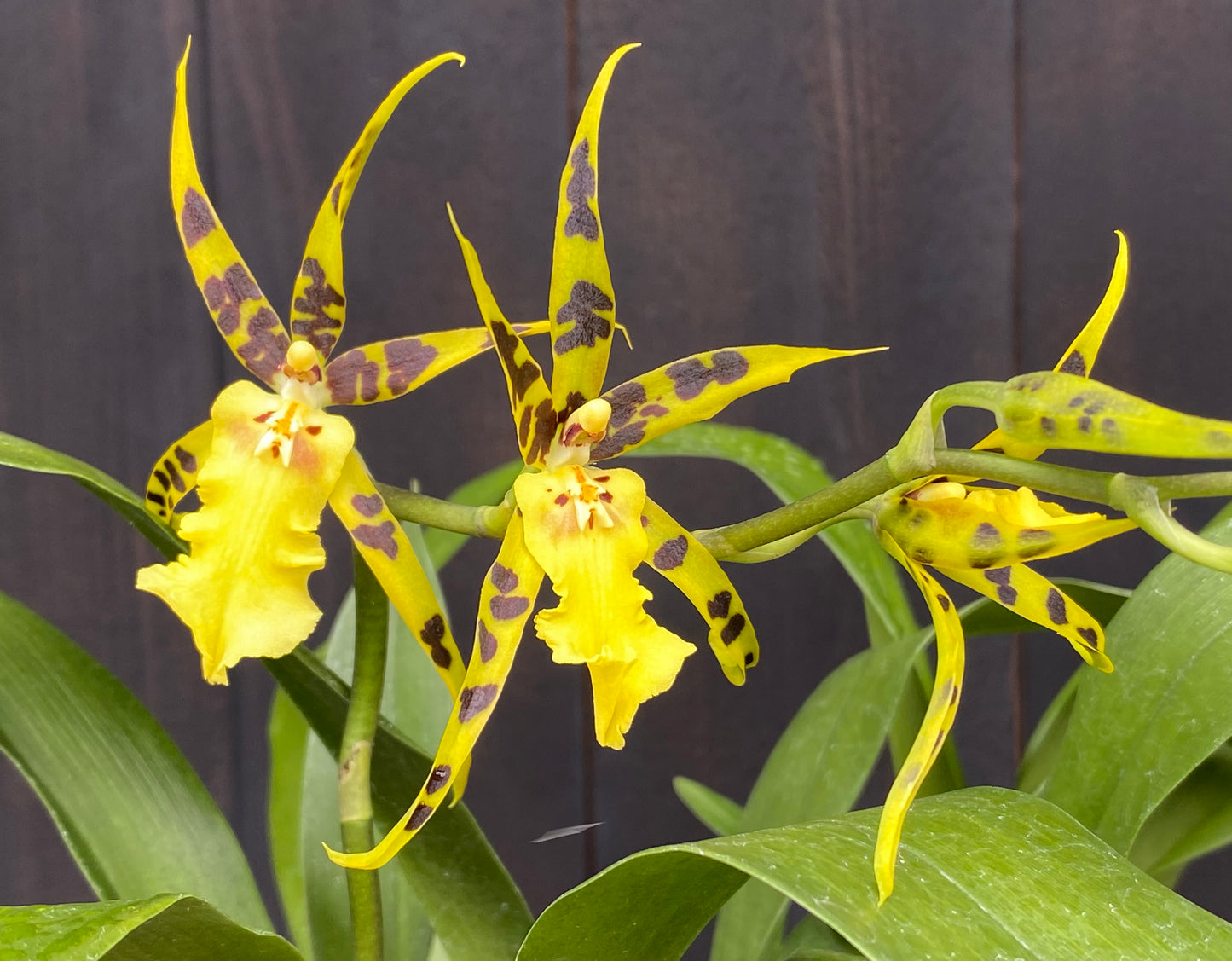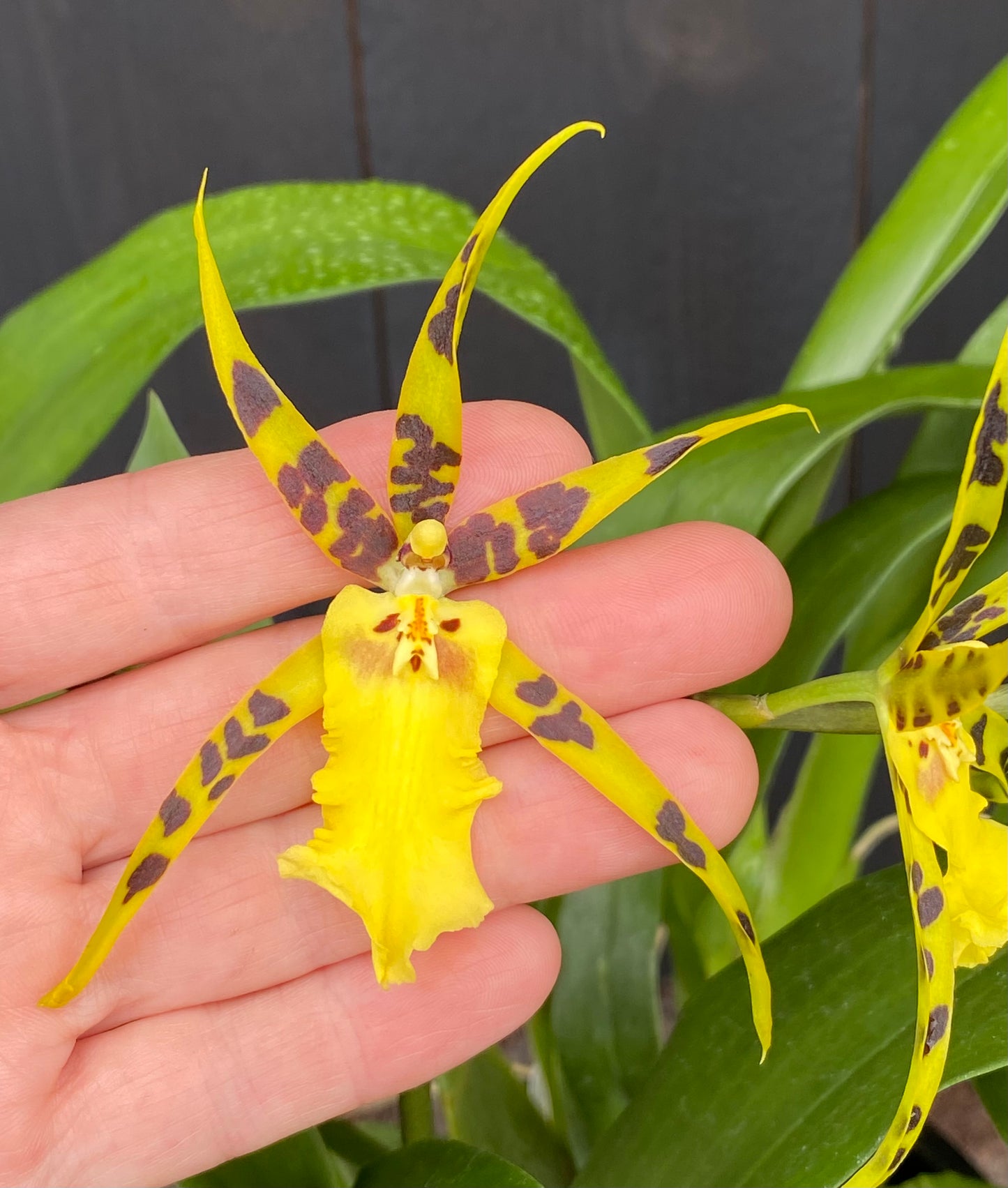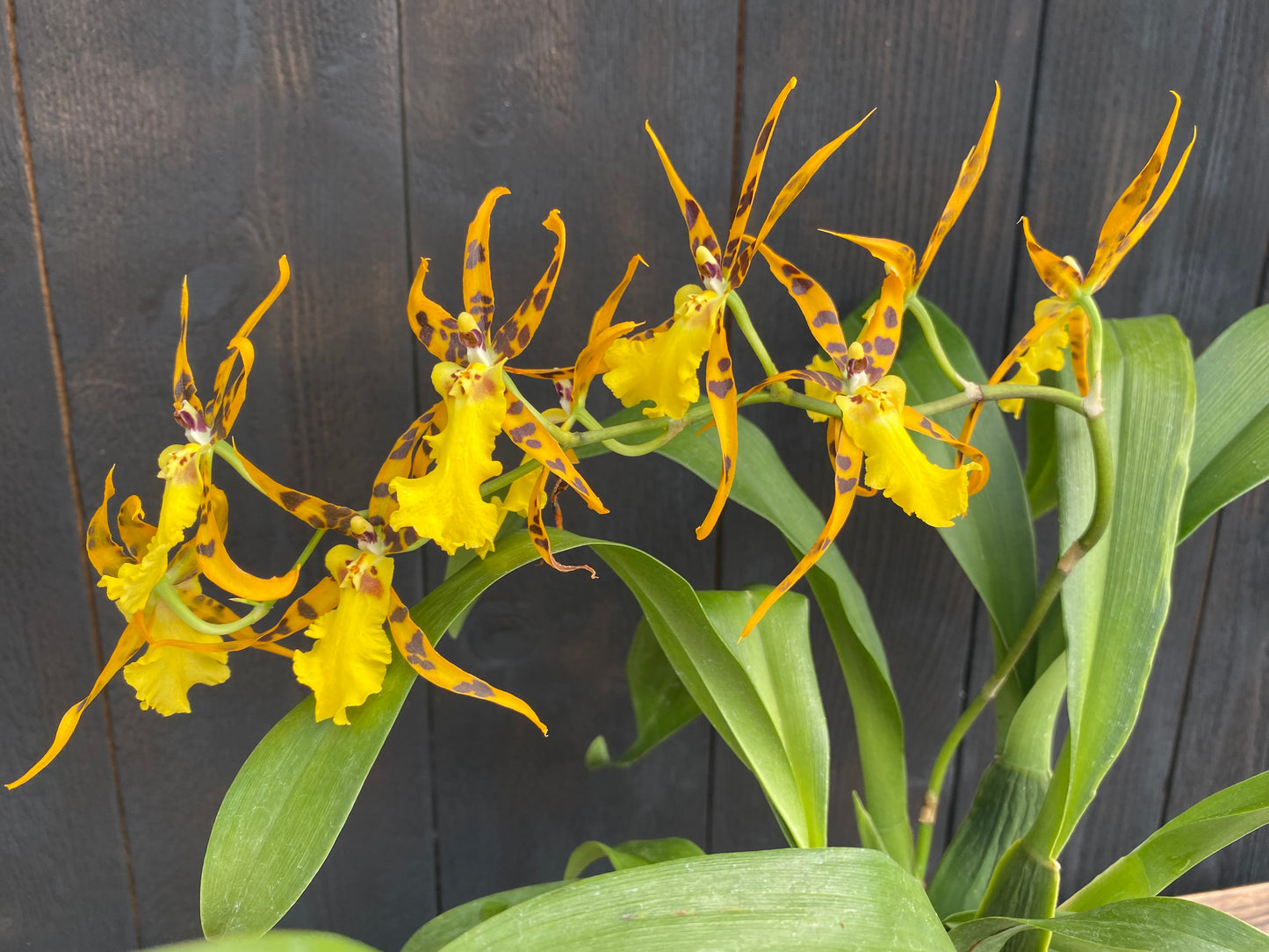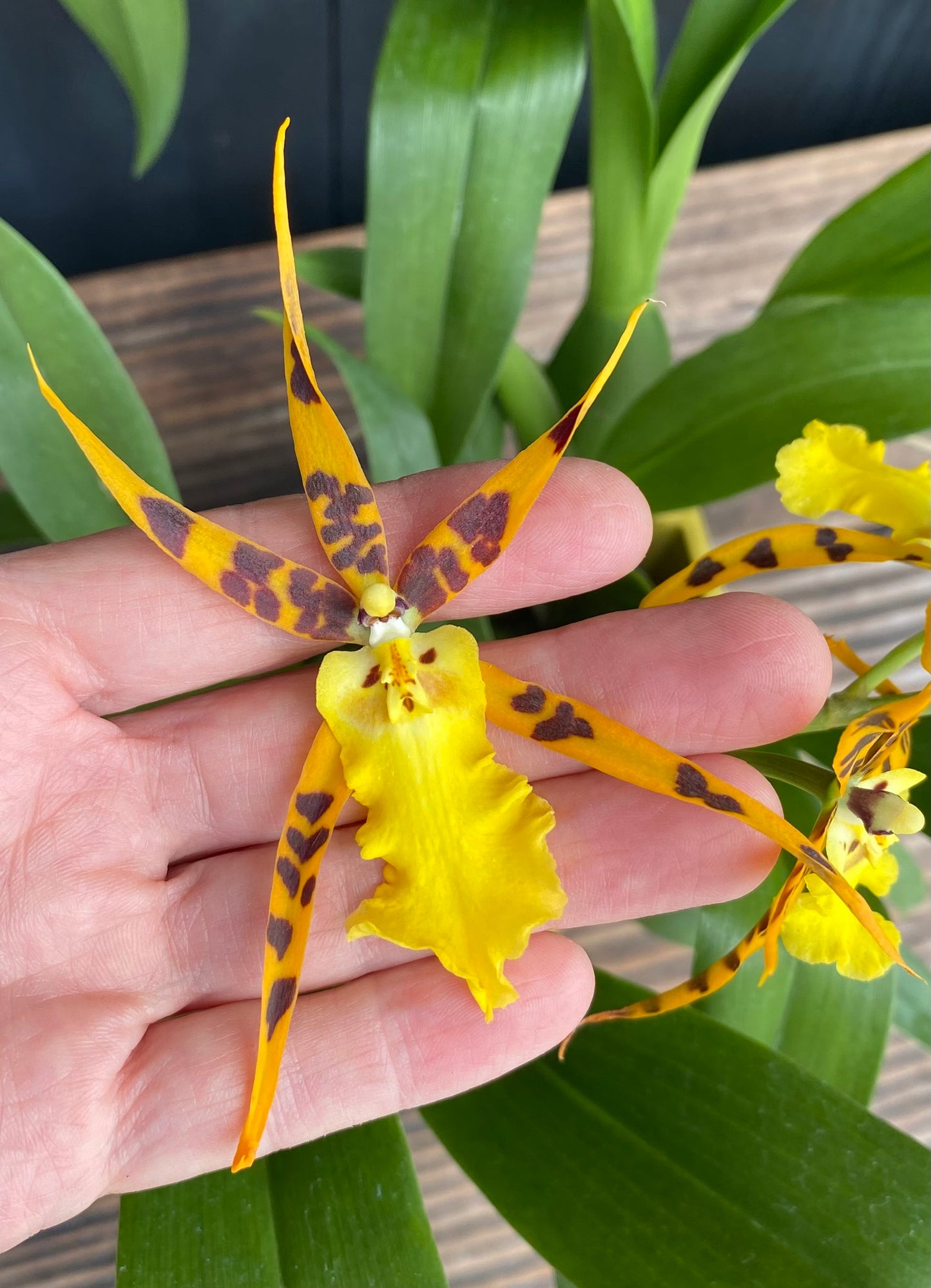Kalapana Orchid Farm
Alcra. Pacific Nova ‘Butter Buds’
Alcra. Pacific Nova ‘Butter Buds’
Couldn't load pickup availability
This orchid is a classic "spider orchid," and it's easy to see why. This dramatic look is no accident; it's a genetic inheritance from its dominant parent, the Brassia genus, which are pollinated in the wild by spider-hunting wasps. The wasp gets tricked into thinking the orchid's lip is a spider and attacks, performing pollination in the process. A bit of devious deception from the plant kingdom.
Aliceara Pacific Nova ‘Butter Buds’ is an intergeneric hybrid, a blend of Brassia, Miltonia, and Oncidium. Its parents are Miltassia Jet Setter and the impressive Brassia longissima. That Brs. longissima, a species from Central and South America, is famous for its spidery flowers that can stretch over a foot long and is a direct parent, so its influence is unmistakable. Digging further into the background, we find a rich history rooted in the wet montane forests of Costa Rica, Panama, Colombia, and Brazil with species like Brs. lanceana, Brs. Gireoudiana, and Miltonia spectabilis all lending their traits to the final show.
The ‘Butter Buds’ cultivar produces stunning, long-lasting flowers on an arching spike. Each bloom is a spectacle, measuring 3-5 in. from tip to tip. The color is a vibrant buttery yellow to chartreuse, accented with bold, chocolate-maroon spotting at the base of the petals and sepals. Petals will darken into a light orange as flowers mature (photos below were taken from the same plant, approximately three weeks apart). The lip is broad and pronounced, a creamy white or pale yellow with similar dark spotting, creating a fantastic focal point. The blooms often carry a light, spicy fragrance, particularly in the morning.
The plant itself exhibits the typical growth habit of the Oncidium alliance. It is a sympodial orchid with ovoid, slightly flattened pseudobulbs that are tightly clustered. Each pseudobulb is topped by one or two long, relatively thin, strap-like leaves. For the size and drama of the flowers it produces, the plant remains surprisingly manageable in size.
Care Instructions
Light: Bright, filtered light is ideal. Avoid direct, intense sunlight which can scorch the thinner leaves. An east-facing window or a shaded south or west window is suitable.
Water: This orchid prefers to be kept evenly moist, but not soggy. Water thoroughly when the top inch of the potting medium feels dry to the touch. Do not allow the medium to dry out completely for extended periods, as the pseudobulbs can shrivel.
Temperature: Intermediate temperatures are best. Aim for daytime temperatures between 70-80°F and nighttime temperatures between 55-65°F. They appreciate the slight drop in temperature at night.
Humidity: Prefers humidity levels of 50-70%. Good air movement is crucial to prevent rot and bacterial issues, especially in more humid conditions.
Potting Medium: A fine-grade orchid bark mix is an excellent choice. This provides the right balance of moisture retention and necessary air circulation around the roots. Repot every 1-2 years, or when the mix begins to decompose.
Share










